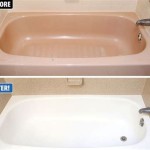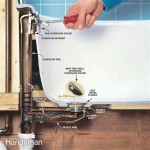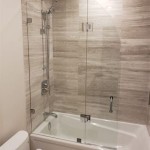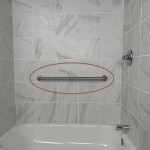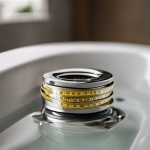Freestanding Bathtub Acrylic: A Comprehensive Guide
Acrylic freestanding bathtubs have become increasingly popular in modern bathroom design, offering a blend of aesthetic appeal, versatility, and affordability. They represent a significant advancement over traditional materials like cast iron and steel, presenting a lightweight and durable alternative for homeowners seeking a luxurious bathing experience. This article delves into the characteristics of acrylic freestanding bathtubs, exploring their construction, advantages, disadvantages, maintenance, and factors to consider when making a purchase decision.
The resurgence of freestanding bathtubs is largely due to their ability to function as a bathroom's focal point. Unlike built-in tubs, freestanding models are not constrained by walls or enclosures, allowing for greater design flexibility. They can be positioned anywhere in the room, provided that plumbing connections are accessible, thereby enabling homeowners to create spa-like environments within their own homes. Acrylic, as the primary material, contributes significantly to this design freedom by offering a wide range of shapes, sizes, and styles.
Acrylic Composition and Manufacturing
Acrylic is a synthetic polymer, specifically polymethyl methacrylate (PMMA), known for its clarity, strength, and resistance to weathering. In the context of bathtub manufacturing, acrylic sheets are typically thermoformed, a process where the material is heated to a pliable temperature and then molded into the desired shape using a vacuum or pressure system. This process allows for intricate designs and seamless construction. The thickness of the acrylic sheet is a crucial factor in determining the tub's durability and structural integrity; thicker sheets generally offer greater resistance to flexing and cracking.
To enhance the strength and insulation properties of acrylic bathtubs, they are often reinforced with layers of fiberglass and resin. This multi-layered construction creates a strong and stable shell capable of withstanding the weight of water and bathers. The fiberglass reinforcement also provides excellent thermal retention, keeping bathwater warmer for longer periods. The quality of the fiberglass and resin used in the reinforcement process directly impacts the long-term performance and lifespan of the bathtub.
Beyond the basic acrylic shell and fiberglass reinforcement, manufacturers may incorporate additional features such as leveling feet, integrated overflow drains, and pre-drilled faucet holes. Leveling feet are particularly important for ensuring the tub sits evenly on potentially uneven bathroom floors. Integrated overflow drains prevent water from overflowing and causing damage, while pre-drilled faucet holes simplify the installation process. The presence and quality of these features can greatly influence the overall user experience and ease of installation.
Advantages of Acrylic Freestanding Bathtubs
The popularity of acrylic freestanding bathtubs stems from a multitude of advantages they offer over alternative materials. These advantages encompass factors such as weight, heat retention, cost, design versatility, and ease of maintenance.
One of the most significant advantages is their relatively light weight. Compared to cast iron or steel tubs, acrylic bathtubs are considerably lighter, making them easier to transport and install. This can be particularly beneficial during renovation projects, especially in older homes where structural support may be a concern. The reduced weight also translates to lower installation costs, as fewer personnel and specialized equipment are required.
Acrylic provides excellent thermal insulation, meaning it retains heat more effectively than many other bathtub materials. This allows bathwater to stay warmer for a longer duration, enhancing the bathing experience and reducing the need to constantly add hot water. The thermal properties of acrylic are especially appealing to those who enjoy long, leisurely soaks.
From a cost perspective, acrylic bathtubs often present a more affordable option compared to cast iron or copper tubs, especially in the freestanding category. While high-end acrylic models can still be quite expensive, the overall range of pricing allows homeowners to find a stylish and functional bathtub that fits within their budget. The lower cost makes it accessible to a wider range of consumers who desire the aesthetic of a freestanding tub without the premium price tag.
The thermoforming process used to manufacture acrylic bathtubs allows for a high degree of design flexibility. Manufacturers can create a wide array of shapes, sizes, and styles, from classic clawfoot designs to modern, minimalist silhouettes. This versatility allows homeowners to select a bathtub that perfectly complements their bathroom's aesthetic and personal preferences. The availability of various colors and finishes further enhances the design possibilities.
Acrylic is a non-porous material, making it resistant to stains, mildew, and scratches. This characteristic simplifies cleaning and maintenance, requiring only mild soap and water to keep the bathtub looking its best. The smooth, non-porous surface also prevents the growth of bacteria and mold, contributing to a more hygienic bathing environment. The ease of maintenance is a significant advantage for busy homeowners who want to minimize cleaning time and effort.
Disadvantages and Considerations
Despite their numerous advantages, acrylic freestanding bathtubs also have certain drawbacks that prospective buyers should consider. These include susceptibility to scratches, potential for color fading, and limitations in weight capacity.
While acrylic is relatively durable, it is more prone to scratches and abrasions compared to materials like cast iron or porcelain. Harsh cleaning agents and abrasive scrub brushes can damage the surface of an acrylic bathtub, leading to unsightly scratches. It is therefore crucial to use gentle cleaning products and soft cloths when cleaning an acrylic tub. Although minor scratches can often be buffed out with specialized acrylic repair kits, deeper scratches may be more difficult to address.
Over time, exposure to sunlight and harsh chemicals can cause acrylic bathtubs to fade or discolor. This is particularly true for colored acrylic models. To mitigate this risk, it is advisable to avoid placing acrylic bathtubs in direct sunlight and to use only recommended cleaning products. Regular cleaning and maintenance can also help to preserve the color and finish of the bathtub.
While acrylic bathtubs are reinforced with fiberglass, they may have limitations in terms of weight capacity compared to cast iron or steel tubs. It is essential to check the manufacturer's specifications for the maximum weight limit to ensure the bathtub can safely accommodate bathers and water. Exceeding the weight limit can potentially lead to structural damage and compromise the bathtub's integrity. The structural integrity is directly related to the quality and thickness of the acrylic and the fiberglass reinforcement.
Furthermore, the installation of a freestanding bathtub, regardless of the material, can present certain challenges. Proper plumbing connections are crucial, and the floor must be level and adequately supported to bear the weight of the tub and water. In some cases, it may be necessary to reinforce the floor joists to ensure sufficient structural support. Professional installation is often recommended to avoid potential problems and ensure the bathtub is properly sealed and connected to the plumbing system.
Factors to Consider When Purchasing an Acrylic Freestanding Bathtub
Choosing the right acrylic freestanding bathtub involves careful consideration of several factors, including size, shape, style, features, and budget. Evaluating these aspects will help ensure that the selected bathtub meets the homeowner's needs and preferences.
The size of the bathtub should be appropriate for the bathroom space and the user's physical dimensions. Measure the available space carefully and consider the overall layout of the bathroom. A bathtub that is too large can overwhelm the room, while one that is too small may not provide a comfortable bathing experience. Consider the internal dimensions of the tub, specifically the length and width at the bottom, to ensure sufficient space for stretching out and relaxing.
Acrylic freestanding bathtubs are available in a wide variety of shapes, including oval, rectangular, round, and slipper designs. The shape of the bathtub should complement the overall style of the bathroom. Oval and round tubs tend to create a softer, more organic feel, while rectangular tubs offer a more modern and streamlined aesthetic. Slipper tubs, with their raised backrests, provide enhanced comfort and support. Consider the aesthetic goals for the bathroom alongside personal comfort preferences when selecting a shape.
The style of the bathtub should coordinate with the existing fixtures and décor in the bathroom. Consider whether the bathroom has a modern, traditional, or transitional style and select a bathtub that complements that aesthetic. Pay attention to details such as the tub's feet (if any), the faucet style, and the overall silhouette. The tub should enhance the bathroom's overall design and create a cohesive look.
Consider any additional features that may enhance the bathing experience, such as jets, chromatherapy lighting, or built-in armrests. Jets can provide a therapeutic massage, while chromatherapy lighting can create a relaxing and mood-enhancing ambiance. Built-in armrests can provide additional comfort and support. Evaluate the value of these features based on personal preferences and budget considerations. Some features also require additional electrical or plumbing work.
Establish a budget before beginning the shopping process and stick to it as closely as possible. Acrylic freestanding bathtubs range in price from relatively affordable to quite expensive, depending on the size, shape, features, and brand. Research different brands and models and compare prices to find the best value for the money. Remember to factor in the cost of installation when determining the overall budget. Also, consider the long-term value of a durable, high-quality bathtub, rather than focusing solely on the initial price. A well-chosen and properly maintained acrylic bathtub can last for many years, providing a rewarding bathing experience for the homeowner.

Messina Prestige Freestanding Unique Shape Acrylic

Spacious White Acrylic Freestanding Bathtub Singapore Ubuy

Malo Free Standing Acrylic Bathtub Yuubath

Vanity Art 71 X 32 Acrylic Freestanding Bathtub

60 Rounded Acrylic Surface Freestanding Bathtub

Clarissa 67 Inch Acrylic Double Slipper Modern Bathtub Still Waters Bath

Acrylic Bathtubs Singapore

Groove Oval Acrylic Fluted Freestanding Soaking Tub Vtb

Simple Freestanding Acrylic Bathtub K1561 Made In China Com

The Acrylic Bathtub Debate Pros Cons And Warnings
Related Posts

